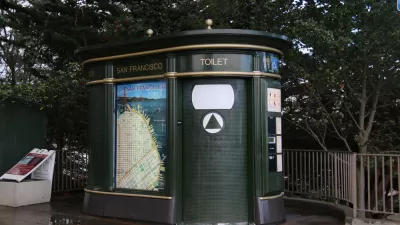Voice of San Diego reports in detail about the months of warning San Diego officials had about the spread of Hepatitis A in public areas around the city. Still, prevention measures took a back seat to bureaucracy.

Lisa Halverstadt provides in-depth, behind-the-scenes reporting on a massive public health scare that finally came to national attention this month in San Diego, after hundreds were infected with Hepatitis A. (Hepatitis A is a viral liver disease transmitted through ingestion of contaminated food and water or through direct contact with an infectious person, according to the World Health Organization's definition.)
Halverstadt reports on the disparate experience on the citizens who contracted Hepatitis A, while officials from the city and the country of San Diego delayed in a response. An initial email alert about a growing number of Hep A cases, sent in March, didn’t draw much attention, according to Halverstadt. That initial alert reported 19 cases, but by mid-April that number had climbed to 42, and two had died. "By early May, the situation worsened. Three patients were dead, and there were 80 documented cases," adds Halverstadt. By June that number reached 160 cases, with the death toll rising to four.
Halverstadt tracks the response of city and county officials alongside the growing number of documented cases. Of concern to planners and anyone interested in the relationship between public health and the built environment were the city's lack of sanitation stations, and its inability to roll out more facilities. "On July 13, two hand-washing stations went up outside a quiet county health complex in Midway, miles from downtown streets considered ground zero of the outbreak," according to Halverstadt. "County health officials said they believed poor hygiene fueled the spread of the virus, yet efforts to deploy more hand-washing stations stalled for weeks." Another story by James deHaven reports that San Diego officials were repeatedly warned about a lack of public bathrooms in the city's downtown. Paul Sisson reports that commuters are now afraid to take public transit.
In September, the story of San Diego's Hepatitis A outbreak went national, punctuated by the story of the city bleaching its streets in response to the spread of the virus, and the Los Angeles Times began to wonder if the outbreak could be coming to the larger city to the north, with its massive homeless population and similar lack of sanitation resources.
FULL STORY: Months of Emails, Then a Mad Scramble: How the Hepatitis A Crisis Unfolded Behind the Scenes

Maui's Vacation Rental Debate Turns Ugly
Verbal attacks, misinformation campaigns and fistfights plague a high-stakes debate to convert thousands of vacation rentals into long-term housing.

Planetizen Federal Action Tracker
A weekly monitor of how Trump’s orders and actions are impacting planners and planning in America.

In Urban Planning, AI Prompting Could be the New Design Thinking
Creativity has long been key to great urban design. What if we see AI as our new creative partner?

Pedestrian Deaths Drop, Remain Twice as High as in 2009
Fatalities declined by 4 percent in 2024, but the U.S. is still nowhere close to ‘Vision Zero.’

King County Supportive Housing Program Offers Hope for Unhoused Residents
The county is taking a ‘Housing First’ approach that prioritizes getting people into housing, then offering wraparound supportive services.

Researchers Use AI to Get Clearer Picture of US Housing
Analysts are using artificial intelligence to supercharge their research by allowing them to comb through data faster. Though these AI tools can be error prone, they save time and housing researchers are optimistic about the future.
Urban Design for Planners 1: Software Tools
This six-course series explores essential urban design concepts using open source software and equips planners with the tools they need to participate fully in the urban design process.
Planning for Universal Design
Learn the tools for implementing Universal Design in planning regulations.
planning NEXT
Appalachian Highlands Housing Partners
Mpact (founded as Rail~Volution)
City of Camden Redevelopment Agency
City of Astoria
City of Portland
City of Laramie





























